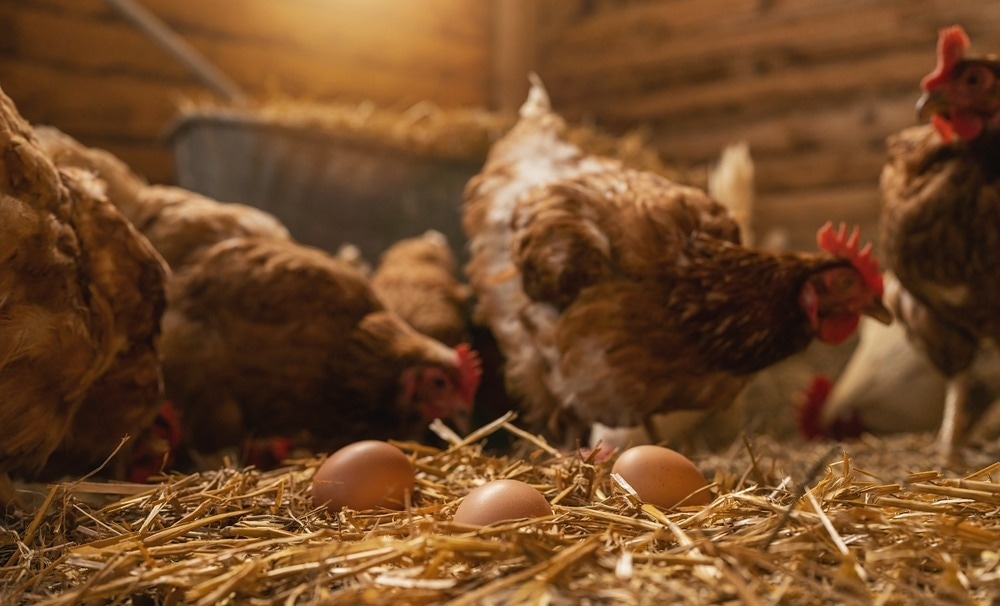Reviewed by Danielle Ellis, B.Sc.Jan 3 2024
According to a University of Queensland study, people can determine a hen's mood simply by listening to its clucks.

Image Credit: r.classen/Shutterstock.com
Researchers looked into whether people could accurately recognize the context of calls or clucking sounds made by domestic chickens, which are the most widely farmed species worldwide, according to Professor Joerg Henning of the UQ School of Veterinary Science.
In this study, we used recordings of chickens vocalizing in all different scenarios from a previous experiment. Two calls were produced in anticipation of a reward, which we called the ‘food’ call and the ‘fast cluck’. Two other call types were produced in non-reward contexts, such as food being withheld, which we called the ‘whine’ and ‘gakel’ calls.”
Joerg Henning, Professor, School of Veterinary Sciences, University of Queensland
In order to determine whether people could correctly identify the context in which the sounds of chickens were produced and whether different demographics and degrees of familiarity with chickens had an impact, the researchers replayed the audio files.
We found 69% of all participants could correctly tell if a chicken sounded excited or displeased. This is a remarkable result and further strengthens evidence that humans have the ability to perceive the emotional context of vocalizations made by different species.”
Joerg Henning, Professor, School of Veterinary Sciences, University of Queensland
Professor Henning added that the capability to detect emotional information from vocalization could improve the welfare of farmed chickens.
Henning continues, “A substantial proportion of participants being able to successfully recognize calls produced in reward-related contexts is significant. It provides confidence that people involved in chicken husbandry can identify the emotional state of the birds looking after, even if the people do not have prior experience.”
Henning notes, “Our hope is that in future research, specific acoustic cues that predict how human rate arousal in chicken calls could be identified, and these results could potentially be used in artificially intelligent based detection systems to monitor vocalizations in chickens.”
Henning concludes, “This would allow for the development of automated assessments of compromised or good welfare states within poultry management systems. Ultimately this could enhance the management of farmed chickens to improve their welfare, while helping conscientious consumers to make more informed purchasing decisions.”
Source:
Journal reference:
McGrath, N., et al. (2023). Humans can identify reward-related call types of chickens. Royal Society Open Science. doi.org/10.1098/rsos.231284.